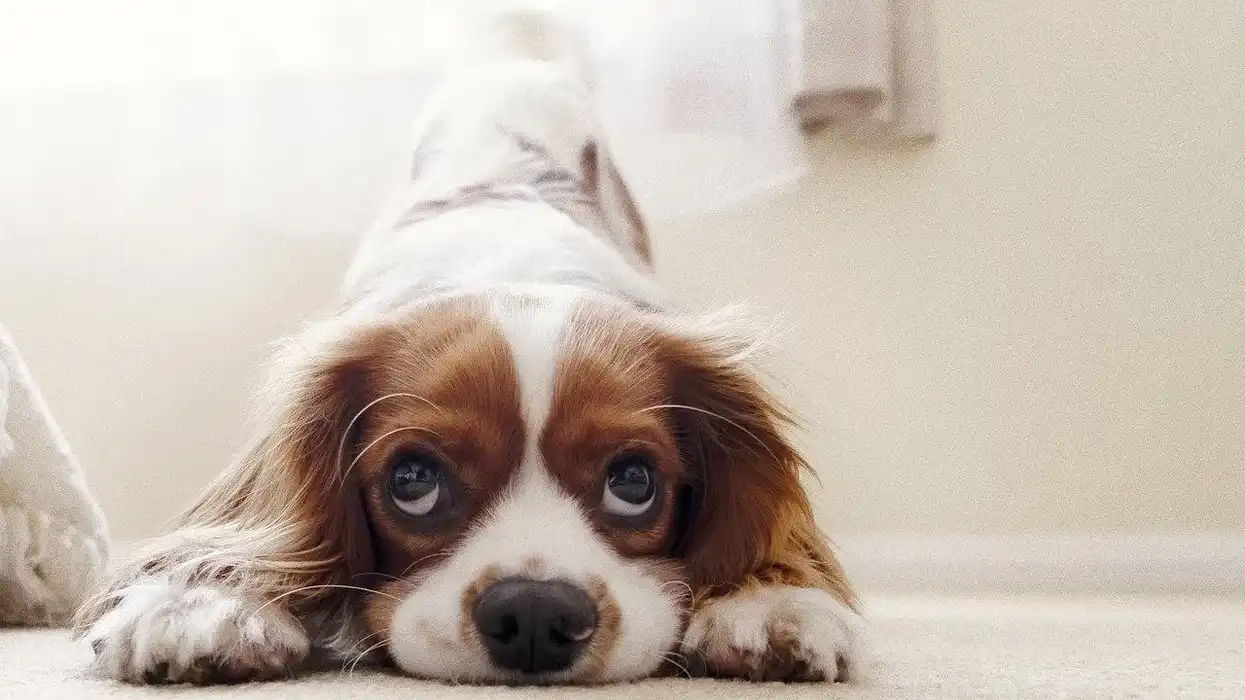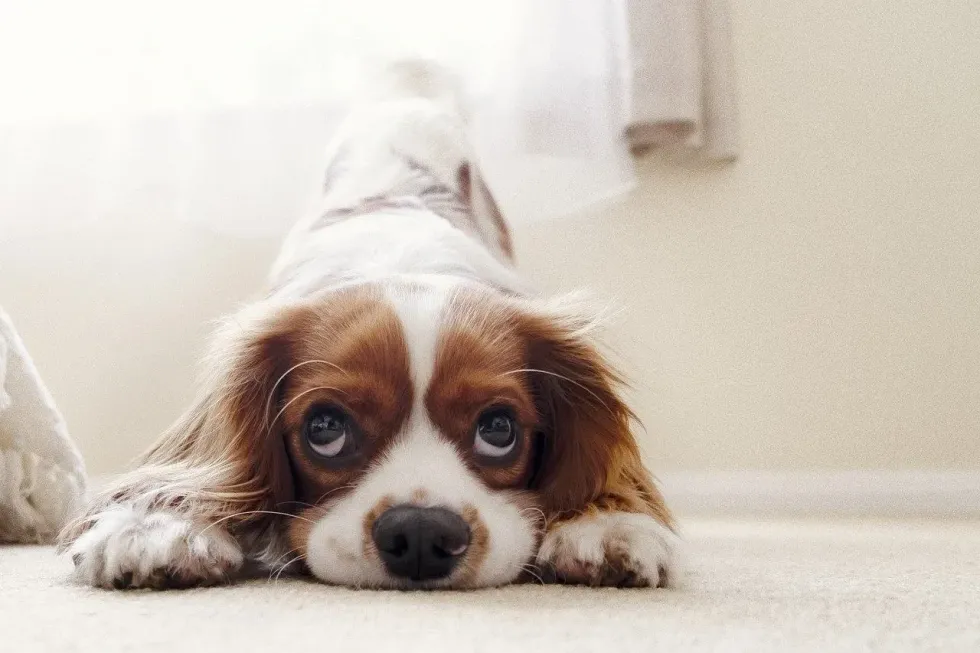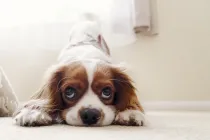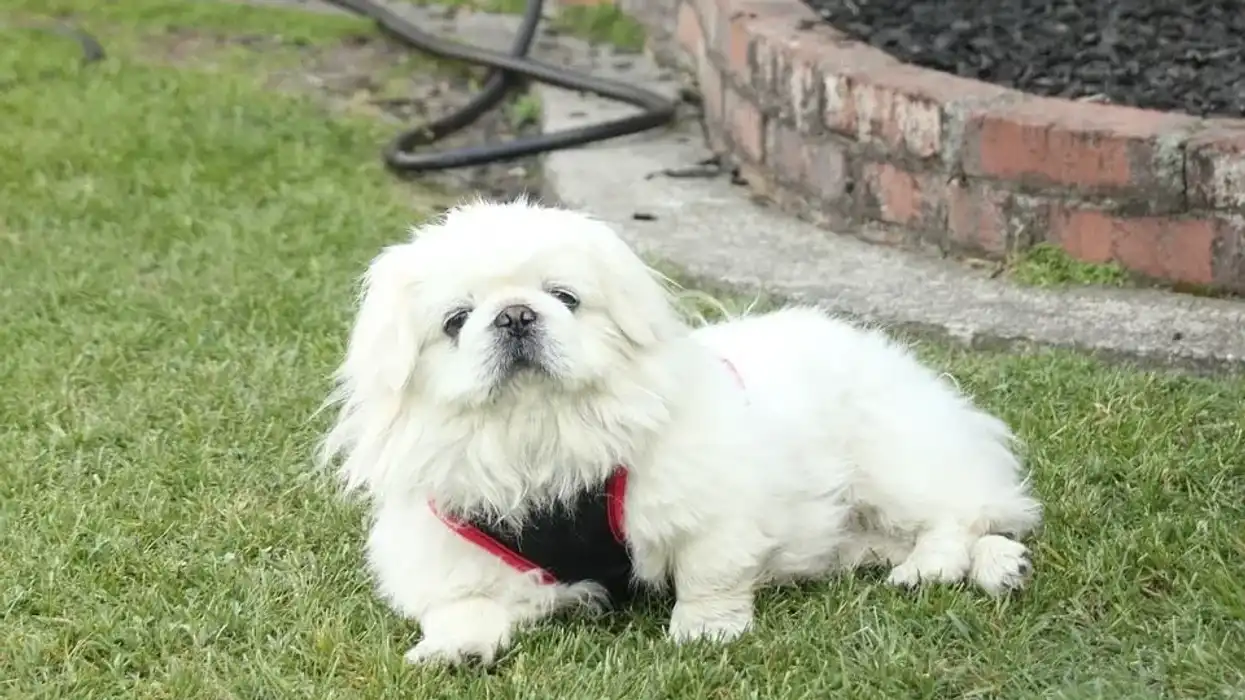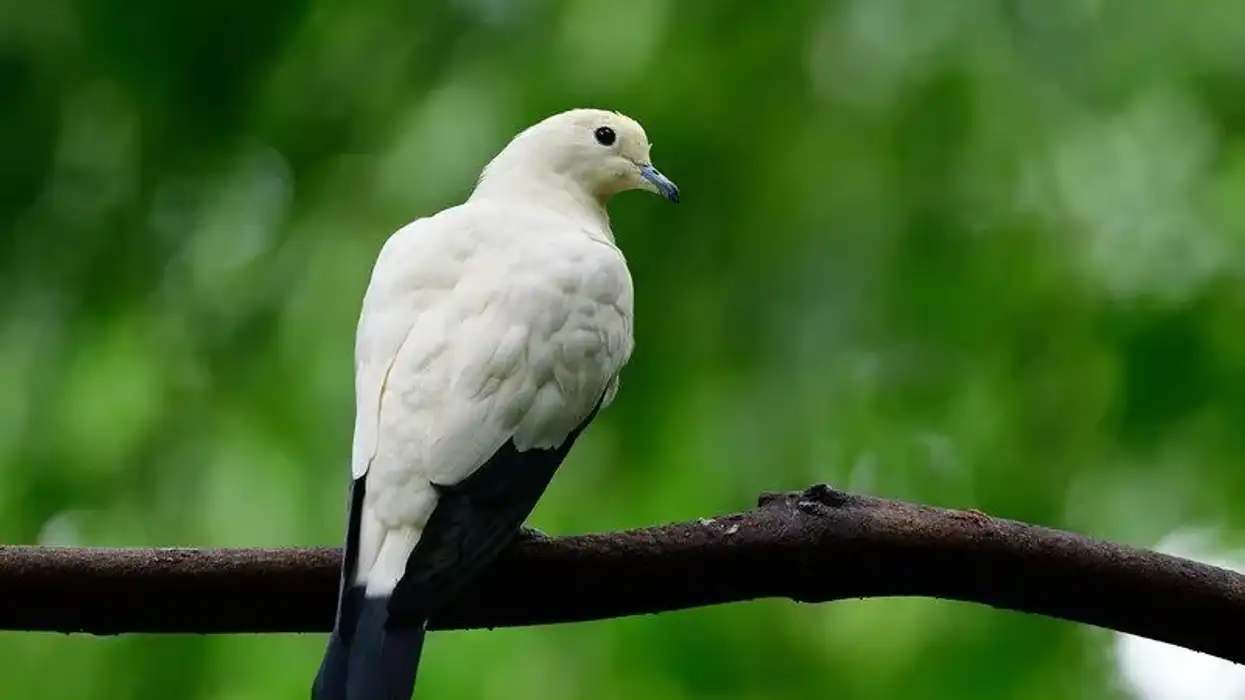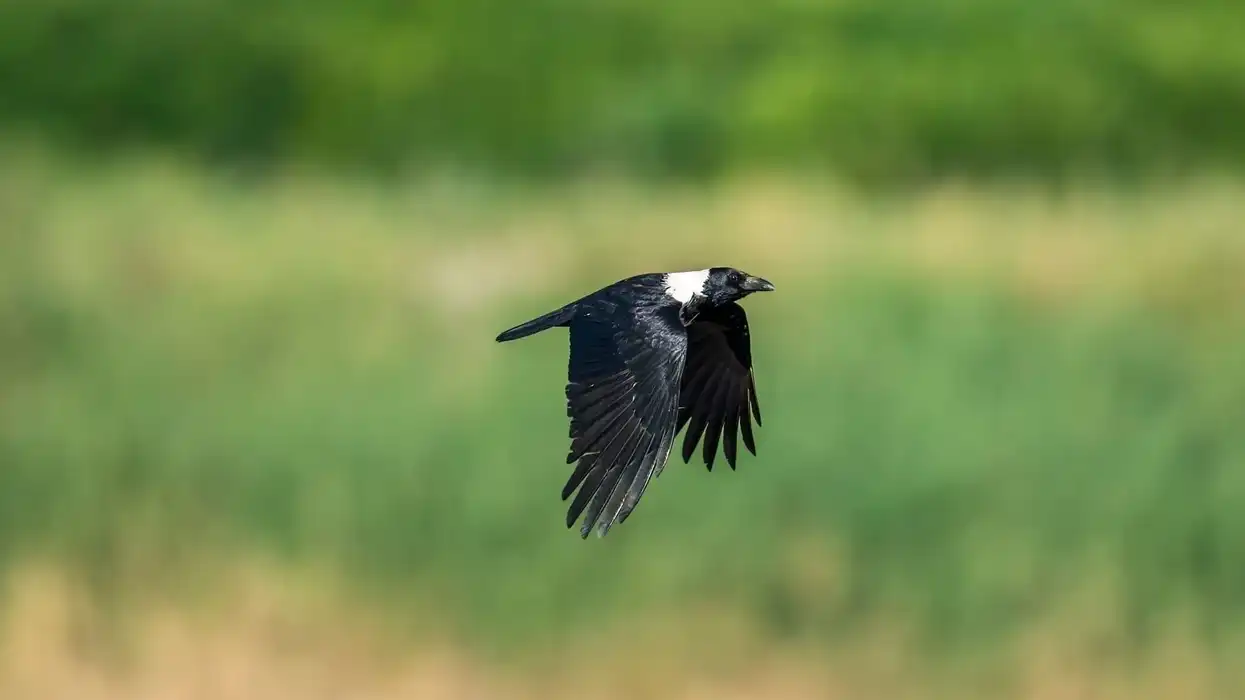Fun Cavalier King Charles Spaniel Facts For Kids

Content
- What type of animal is a Cavalier King Charles Spaniel?
- What class of animal does a Cavalier King Charles Spaniel belong to?
- How many Cavalier King Charles Spaniels are there in the world?
- Where does a Cavalier King Charles Spaniels live?
- What is a Cavalier King Charles Spaniel's habitat?
- Who do Cavalier King Charles Spaniels live with?
- How long does a Cavalier King Charles Spaniel live?
- How do they reproduce?
- What is their conservation status?
- What do Cavalier King Charles Spaniels look like?
- How cute are they?
- How do they communicate?
- How big is a Cavalier King Charles Spaniel?
- How fast can a Cavalier King Charles Spaniel run?
- How much does a Cavalier King Charles Spaniel weigh?
- What are their male and female names of the species?
- What would you call a baby Cavalier King Charles Spaniel?
- What do they eat?
- Are they slobbery?
- Would they make a good pet?
- Did you know...
- Characteristics And Health Issues
- Getting Your Own Cavalier King Charles Spaniel
If you want to read about a small but energetic canine breed, then you would love to read about the Cavalier King Charles Spaniel. This specific breed was very famous with royalty, especially in the sixteenth century when it found its biggest patron in King Charles II.
It is allegedly rumored that King Charles II would take at least two of these canines with him wherever he would go, and he is the one who lends his name to the breed.
However, for a long while, the breed was all but lost.
It was until the 1920s and the 1930s that the Cavalier made a comeback due to the efforts of breeders in America and England. By 1945, the American Kennel Club had classified this dog as a different breed from its predecessors.
All the effort proved even more fruitful when the Cavalier was made part of the toy breed by the AKC in 1995. Since then, the popularity of this unique breed has grown by leaps and bounds.
So, if you want to read more about this special breed of dog, scroll down, and you will find all the information that you need to know about the Cavalier.
If you like to read more facts about animals, take a look at the pocket pitbull and the lab chow mix.
Cavalier King Charles Spaniel Interesting Facts
What type of animal is a Cavalier King Charles Spaniel?
The Cavalier King Charles Spaniel is one of the more popular dog breeds recognized by the American Kennel Club (AKC) as a separate breed of dog. They have been classified by the American Kennel Club (AKC) as part of the toy breeds of dogs.
What class of animal does a Cavalier King Charles Spaniel belong to?
The Cavalier King Charles Spaniel is a canine that belongs to the class of Mammalia or mammals. Every dog in the world belongs to the class of mammals.
How many Cavalier King Charles Spaniels are there in the world?
Like most dogs, there is not a concrete number of the total population of Cavalier King Charles Spaniel. However, there are some data that are useful in determining how popular this group of dogs really is.
In a 2007 The Kennel Club survey, it was found that the Cavalier King Charles Spaniel had around 11,500 registrations in the United Kingdom, and they were termed as sixth amongst the most popular dog breeds.
However, in the United States, data released by the American Kennel Club (AKC) show that the population of these dogs is on the rise with the increase in their popularity.
In 1998, these dogs were above the rank of 50 in terms of popularity; however, by the end of 2009, they were in the top 25 dog breeds. Come 2013, the Cavalier King Charles Spaniel had grown even more popular, with it being ranked 18th this time.
This dog breed has achieved popularity in Australia, with it being ranked the fourth most popular dog Down Under. Other than this, there are official Cavalier King Charles Spaniel Kennel Clubs all over the world, including countries like Denmark, Belgium, South Africa, Norway, Germany, Canada, Finland, the Netherlands, France, Spain, New Zealand, Czech Republic, and Sweden.
Owing to all these facts, we can say that it is safe to assume that the population of Cavalier King Charles Spaniel has been increasing all over the world.
Where does a Cavalier King Charles Spaniels live?
Since the AKC describes and defines the Cavalier King Charles Spaniel as a toy breed, these dogs are not found in the wild.
They are bred by specialized breeders who sell them to owners who, obviously, take the dogs to their own homes or apartments.
As these dogs and their predecessor, King Charles Spaniel, have been used as domestic pets and trophy dogs for royals, these sweet, gentle dogs have well evolved to live their lives in human homes with their owners and their breeders.
Be wary of putting restricting them within the house as these dogs need the outdoors to have great mental health and physical health.
What is a Cavalier King Charles Spaniel's habitat?
As mentioned before, these breeds of dog have been used to living in courts, and their predecessor, King Charles Spaniel, was named after the British King Charles II of the 16th century, who was so fond of these dogs that there are myths that he issued royal decrees for this dog.
Thus, it can be said easily that the best habitat for a Cavalier King Charles Spaniel is the home of the owner.
These dogs have evolved into adapting well to their owner's house or apartment, or farm. For urban owners of apartments, the best place to live with these active dogs would be apartments with plenty of open spaces and a small yard outdoors.
However, care must be taken for these dogs so as to see that they are not in very warm habitats as generally, this breed of little dogs is not well-suited to hotter weather conditions and habitat.
However, given time and care, it has been observed that this dog breed can adapt easily to any kind of environment and place.
Who do Cavalier King Charles Spaniels live with?
Like most domesticated breeds of dogs, these sweet, gentle animals almost always live with their owners and not in packs. However, separation anxieties are very common amongst dogs of the toy breed.
Cavaliers are known for their attachments to humans. They follow their humans at every moment of the day around the house or outside.
It is commonly said that if someone gets a Cavalier, they will never be alone. These dogs can grow very weary and scared if they stay away from their owners for a very long time. On the other hand, the Cavaliers are very social and friendly dogs.
Thus, they do not have any problems living with other dogs and pets in the house. The Cavaliers are also known to get along very well with cats, who are generally regarded as the mortal enemy of all breeds of dogs.
How long does a Cavalier King Charles Spaniel live?
The Cavalier King Charles Spaniels' life span is usually 9-15 years. In some cases, Cavaliers have been known to have a life span of 15 years due to better breeding genes and great diet and exercise plans.
However, for the health of this breed, standard health issues like mitral valve diseases and eye and hip problems, along with Syringomyelia, can cause the average life span of this dog breed to come down by a few years.
How do they reproduce?
The Cavalier King Charles Spaniel dog breed has a normal reproduction process like any other dog. However, it is recommended to get your Cavaliers checked by a vet before the reproduction cycle begins.
These dogs must be properly taken care of once they have conceived their puppies.
Usually, the female dog is placed with the male dog once the female is in heat. The breeding season for females generally occurs once every year, and they are receptive toward their male counterparts for around a week.
The birth cycle is approximately 65 days, but due to the Cavalier King Charles Spaniel dog breed being a part of the toy breeds, the Cavaliers may go into labor at around 55 days and produce puppies early. The litter size of these dogs is around two to five puppies.
When giving birth to puppies for the first time, the litter size has an average of two puppies, but in the following reproductive cycles, the probability of the litter size increasing is higher.
However, the highest litter size for these small, gentle dogs plateaus at six puppies. A puppy from this breed is very popular!
What is their conservation status?
As we have already said before, the population of the Cavaliers has been increasing due to their increased appeal to the general people.
As they are not listed by the IUCN(International Union For Conservation Of Nature) and can be easily grown by breeders, we can all assume that the conservation status of this breed of dog has nothing concerning about it.
Cavalier King Charles Spaniel Fun facts
What do Cavalier King Charles Spaniels look like?

The Cavalier King Charles Spaniel is a sweet, gentle small dog that is quite well-proportioned belonging to the toy breed of dogs. It was initially recognized as a lap dog and hence quite small in stature.
They are observed to be longer than they are tall and have medium-sized bones. They have a black nose and a slightly round face with a flat head accompanied by large cute, beady eyes.
This is one of the breeds that have dark brown eyes, according to the AKC. They have ears that are set high, with plenty of feathering on them and a long, droopy shape.
These dogs also have a fairly long neck that is muscled well, resulting in a small arch at the crest. Their heads are also not domed like toy spaniels or other smaller dogs but have a flat appearance.
On the issue of their coat, they have a moderate length silky fur coat that is generally free from curls, though sometimes curls are present. The Cavalier King Charles Spaniel dog breed also has a tail that is not docked, and when docked rarely, they are docked at one-third of the length of the tail.
The long featherings are not restricted only to the ears, though.
The body, chest, feet, and legs all have long featherings. In fact, the feature of long feathering on the feet found in these dogs is unique amongst all the breeds of toy spaniels.
Yet, the most distinct feature of these dogs is the color of their furs.
Whenever you visit a Cavalier King Charles Spaniel Club, you will always find these dogs to be defined into four colors. They are Blenheim, ruby, black and tan, and tricolor.
Blenheim is the most popular fur coating, in which richly made chestnut marks have been broken down by a white pearly coat.
The most unique feature of the Blenheim breed is the thumb-shaped chestnut spot on the middle of the forehead called the Blenheim spot. The second color is the Tricolor, where there are tan markings on the black and white coat of fur on the cheeks and the eyebrows and underside of the tail, and sometimes on their belly.
The Tricolor breed is also referred to as the Prince Charles breed after King Charles II.
The third color Cavalier King Charles Spaniel breed is the Ruby breed, where red or chestnut is the predominant color of the coat, while sometimes there can be white patches on it.
These red and white dogs are great to look at. The Black and Tan breed of the Cavalier King Charles Spaniel dogs are, as the name suggests, dogs where the entire body is covered in black with tan highlights on the cheeks, eyebrows, legs, and beneath the tail.
It should be noted that while the Blenheim breed is the most common Cavalier breed, the other color breeds are easily found with breeders too.
How cute are they?
In terms of cuteness, it could be very hard to find a dog that matches the cuteness quotient of this dog. A Cavalier King Charles Spaniel puppy is one of the cutest things out there.
The cuteness of this dog can be attributed to its appearance.
Their round, beady brown eyes convey the warmth and sweetness this pet dog has. Their expressive eyes can easily lead to people constantly having to pet them and give them food because they appear so adorable.
What also makes them adorable is the fact that they have those long, droopy feathery ears that are very cute to look at.
This highly active pet dog breed, although historically a lap dog like the Toy Spaniels, has a high energy level, and that might also be a contributing factor in someone finding it cool. Due to their high energy level, you will find videos of their funny antics online.
One interesting fact about the Cavalier King Charles Spaniel is the title of the top tail-wagger that it has received from dog lovers of all ages, heights, and weights from around the world. The tail-wagging of this little dog is sure to melt hearts everywhere.
It might not come as a surprise to know that many dog breeders of the Cavalier breed try to attain a dog whose tail is in constant motion all the time!
How do they communicate?
This smart, intelligent breed of dogs use a variety of emotions and physical action to convey their feelings and communicate with their owner. Of course, like all pets in the family, especially dogs, barking is a major communication bridge between the dog and the human.
They love to bark at doorbells and sounds of that sort and bark at birds and squirrels.
Yet, apart from that, these dogs have a quiet temperament. However, there are ways this breed of dog can express its other emotions.
They can express emotions towards their humans by staring at them continuously. Raising a paw as Cavalier King Charles Spaniel looks down is often interpreted as a sign asking the human to get out of its way.
The Cavalier King Charles Spaniel will also lean on the owners as a sign of comfort and safety. On the other hand, they might convey discomfort or anxiousness by constantly flicking their tongues.
These dogs can become victims of separation anxieties and may be found clinging to the leg of the owner as an attempt to thwart that.
Even when it has gone through proper training, the Cavalier might start chewing things to show its sadness or anxiety. On that note, the Cavalier King Charles Spaniel might communicate fear by making themselves smaller.
But, don't think that Cavalier only communicates sad or stressed feelings. The dog's known for its perennial tail-wagging and is normally always in a great mood for fun and energetic activities outdoors.
How big is a Cavalier King Charles Spaniel?
Part of the AKC definition of the toy breeds of the pet dog, the Cavalier King Charles Spaniel is one of the largest in its breed class.
On average, the height of the Cavalier King Charles Spaniel is around 12-13 in(30-33 cm). While they might appear small, they are actually bigger than the average toy spaniel, whose height is around 9 to 11in.
However, both the Cavalier King Charles Spaniel and the Toy Spaniel are about one-third the height of the Saint Bernard dog's breed, whose height is measured at around 28-35 in (71-89 cm) till their shoulders.
How fast can a Cavalier King Charles Spaniel run?
The Cavalier King Charles Spaniel is generally considered amongst the slowest pet dogs in the world, along with the Toy Spaniel and smaller toy breeds. Although energetic and lively, these pet dogs have low speed while running.
Yet, according to the AKC, they are faster than the slowest pet dog breed in the world, which is the Shih Tzu, which runs at a meager 6mph.
But, what the Cavalier lacks in speed, it makes up for with its stamina as a pet dog.
These dogs have great stamina and would often be seen tagging along with their owners on long runs and walks. In some cases, this energetic breed of pet dog might even outwork their human owners in regards to stamina.
How much does a Cavalier King Charles Spaniel weigh?
Belonging to the smallest breeds in the world, i.e., the toy breed according to the AKC, the Cavalier King Charles Spaniel doesn't weigh too much in a similar manner to their closest cousins, the English Toy Spaniel.
In the department of weight, 13–18 lb (5.9-8.2 kg) is the range of these dogs depending on the breeders and the various sub-breeds.
The average weight of these Cavalier King Charles in their life remains about 20 lb (9.07 kg), but the weight of the female may increase during the breeding season due to the weight of the little puppies inside her.
What are their male and female names of the species?
The male is called a dog and the female is called a bitch like every other dog species.
As they are a special breed of dogs, the Cavalier King Charles Spaniel doesn't have different names for their male and female counterparts. Of course, once an owner knows what the gender of their new dog is, they may assign feminine or masculine names to it.
Interestingly, these days many of these pet dogs with feathery ears are given great gender-neutral names to reflect the changes that we are seeing in our society.
What would you call a baby Cavalier King Charles Spaniel?
Like most other dogs, the Cavalier King Charles Spaniel baby is very simply called a puppy. However, as we mentioned before, the human owner of the Cavalier King Charles Spaniel puppy might give their favorite pet a name in the very early stages of their life so that puppy can learn to respond well to subsequent training.
What do they eat?
In accordance with the established food diets of the pet dog, the Cavalier King Charles Spaniel should be given two meals of dry nutritious food every day.
They eat foods like mat (chicken, etc) and vegetables (high in grain, millet, etc).
However, the Cavalier King Charles Spaniel is a dog who, although otherwise in good health, is prone to getting obese really quickly. The human owner of the Cavaliers with feather ears might have to weigh the dog regularly so as to check that it isn't overweight, as this may lead to unwanted health issues in their life.
Also, when giving treats to the dog to help in training, the human owner must restrain themself from giving too many to their new best friend.
Are they slobbery?
The Cavaliers are not part of the breeds that are slobbery. While they are energetic and active, drooling or slobbering isn't a character trait that one is likely to see in this family pet dog either indoors or outdoors. However, there might be one or two exceptions to this general rule.
Would they make a good pet?
Based on this dog's personality and response to training and grooming, we can say that they are an excellent choice as a family pet. The Cavaliers are funny and friendly and are full of energy.
This breed mixes well with the other pets in the house, be it a dog or a cat.
They are not even afraid to make inroads into the friendship of the bigger canines in the family. Most importantly, the Cavalier is excellent with children.
They are a great pet for children who love to run around and play catch, yet the Cavaliers are also liked by the quieter children on whom they can do their historic duty of being a lapdog!
However, this canine breed was originally bred as a hunting dog, and its hunting genes are on display when it meets a pet bird whom it just might try to nab.
But, not to worry too much as many pet owners have reported that this tendency goes away with proper grooming and training early on in the life of the Cavalier puppy.
Did you know...
The Cavalier King Charles Spaniel is not street smart at all and will not think twice to run in front of a car if they are in the middle of chasing any prey, namely a bird or a butterfly.
Also, as this breed has a short nose, they should not be walked during the time they are in heat, and they shouldn't be left anywhere in the warm weather without easy access to water or a cool shady place.
Cavaliers are not big shedders, but they require grooming regularly, sometimes even twice a week, so as to avoid the long, silky coat from getting matted and dirty. One should also clean out the wax in the ears of this dog with those distinct feathery ears.
Characteristics And Health Issues
By the AKC and other kennel clubs in the world, there are certain health issues that have plagued the Cavaliers.
Firstly, they have the common problem of Mitral Valve Disease (MVD), which is a heart health disease that starts relatively earlier in the Cavaliers than in other canine breeds. This heart disease can start as early as one or two years and must be taken proper care of by regular check-ups at the vet.
Then there is also the health issue of Episodic Falling, where the dog cannot relax its muscles even though it is fully conscious.
Syringomyelia, which is a disease where the space in the brain decreases, also appears to be a genetically induced disease in the Cavaliers.
Common problems like hip and elbow dysplasia also occur in them. The other disease that the Cavalier King Charles Spaniel has is the problem with their eyes called dry eyes, where an autoimmune response of the body leads to the tear glands reducing the tears in them.
Yet, all of these problems can be solved with regular visits to the vet.
Exercise that includes running or walking with this breed might lead to the dog being much healthier.
Getting Your Own Cavalier King Charles Spaniel
Getting a Cavalier for yourself can be tricky as these dogs are quite expensive. A Cavalier puppy might cost you around $1200; however, a specialized puppy that has the AKC championship-winning blood might be as expensive as $10,000.
Like always, we would recommend that you get your Cavalier from a reputable breeder who follows all the ethics and rules of breeding.
Here at Kidadl, we have carefully created lots of interesting family-friendly animal facts for everyone to discover! Learn more about some other mammals, including the pitbull chihuahua mix and the cheagle.
You can even occupy yourself at home by drawing one on our Cavalier King Charles Spaniel coloring pages.
We Want Your Photos!
More for You
Sources
https://en.wikipedia.org/wiki/Cavalier_King_Charles_Spaniel
https://dogtime.com/dog-breeds/cavalier-king-charles-spaniel#/slide/1
https://www.akc.org/dog-breeds/cavalier-king-charles-spaniel/
See All
Bachelor of Arts specializing in Journalism and Mass Communication, Postgraduate Diploma in Sports Management

Moumita DuttaBachelor of Arts specializing in Journalism and Mass Communication, Postgraduate Diploma in Sports Management
A content writer and editor with a passion for sports, Moumita has honed her skills in producing compelling match reports and stories about sporting heroes. She holds a degree in Journalism and Mass Communication from the Indian Institute of Social Welfare and Business Management, Calcutta University, alongside a postgraduate diploma in Sports Management.
Bachelor of Technology specializing in Information Technology

Smriti ChaudharyBachelor of Technology specializing in Information Technology
Smriti, a student data scientist, and coder, is pursuing her Bachelor of Technology at K.J. Somaiya College of Engineering. She has achieved top rankings in the International English Olympiad, National Spelling Bee, and PSAT/SAT English Section. She is experienced in content creation and editing for various academic institutions.
Disclaimer
1) Kidadl is independent and to make our service free to you the reader we are supported by advertising. We hope you love our recommendations for products and services! What we suggest is selected independently by the Kidadl team. If you purchase using the Buy Now button we may earn a small commission. This does not influence our choices. Prices are correct and items are available at the time the article was published but we cannot guarantee that on the time of reading. Please note that Kidadl is a participant in the Amazon Services LLC Associates Program, an affiliate advertising program designed to provide a means for sites to earn advertising fees by advertising and linking to Amazon. We also link to other websites, but are not responsible for their content.
2) At Kidadl, we strive to recommend the very best activities and events. We will always aim to give you accurate information at the date of publication - however, information does change, so it’s important you do your own research, double-check and make the decision that is right for your family. We recognise that not all activities and ideas are appropriate for all children and families or in all circumstances. Our recommended activities are based on age but these are a guide. We recommend that these ideas are used as inspiration, that ideas are undertaken with appropriate adult supervision, and that each adult uses their own discretion and knowledge of their children to consider the safety and suitability. Kidadl cannot accept liability for the execution of these ideas, and parental supervision is advised at all times, as safety is paramount. Anyone using the information provided by Kidadl does so at their own risk and we can not accept liability if things go wrong.
3) Because we are an educational resource, we have quotes and facts about a range of historical and modern figures. We do not endorse the actions of or rhetoric of all the people included in these collections, but we think they are important for growing minds to learn about under the guidance of parents or guardians.
